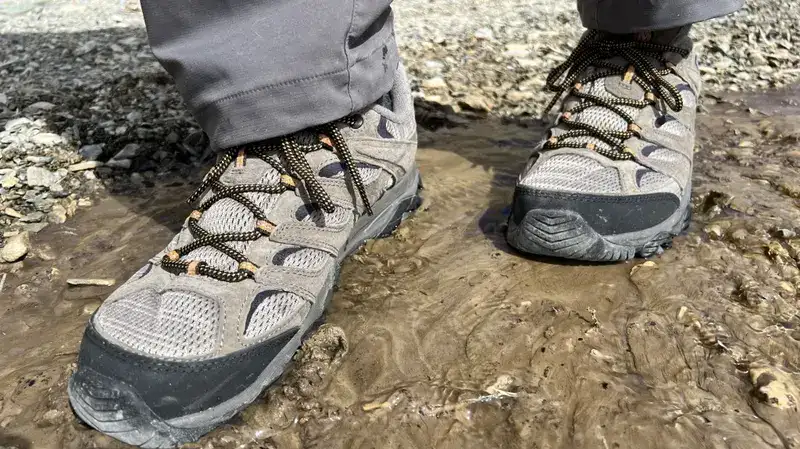Post Preview
Table of Contents
- Introduction to Adaptive Fibers
- Benefits of Adaptive Fibers in Clothing
- How Adaptive Fibers Are Redefining Comfort
- Sustainability and Adaptive Fibers
- Real-life Applications in Fashion
- Technological Innovations in Fiber Production
- The Future Impact of Adaptive Fibers in Everyday Wear
- Conclusion: The Next Steps for Adaptive Fiber Technology
Introduction to Adaptive Fibers
The textile industry continually evolves, with adaptive fibers leading this transformation. These innovative materials are designed to respond to environmental changes, providing unique benefits to wearers beyond traditional fabrics. Adaptive fibers can shift their properties based on body temperature, moisture levels, and movement, making them highly versatile. Understanding adaptive fibers and their work is key to appreciating their transformative potential. For instance, adaptive fibers are used in lingerie fabric, offering superior comfort and flexibility that naturally adjusts to body movements, ensuring that the garment maintains its shape while providing optimal comfort.
These fibers represent a significant leap forward in textile technology, combining the best properties of existing materials with cutting-edge science to create highly functional and comfortable fabrics. Their adaptive nature means they can offer a customized wearing experience, making them ideal for various clothing applications. As consumers become more discerning about the functionality and comfort of their clothing, adaptive fibers are set to become a staple in wardrobes worldwide.
Benefits of Adaptive Fibers in Clothing
One of the main advantages of adaptive fibers is their ability to offer enhanced comfort and flexibility. This characteristic is crucial in activewear and casual clothing, where movement and comfort are paramount. Traditional fabrics often feel restrictive or uncomfortable during physical activities, but adaptive fibers maintain their shape and provide a more personalized fit. Additionally, adaptive fibers can dynamically adjust to the wearer’s movements, ensuring the clothing feels like a second skin. Such fabrics are also known for their moisture-wicking properties, keeping the wearer dry and comfortable during physical activities. This is especially beneficial for athletes and individuals with active lifestyles.
Apart from comfort and flexibility, adaptive fibers also provide significant ergonomic benefits. They reduce friction against the skin, preventing chafing and irritation during long periods of wear. This makes them ideal for sportswear, undergarments, and even medical textiles where comfort and skin health are critical. Furthermore, adaptive fibers can improve posture and muscle support by providing the right amount of elasticity and compression.
How Adaptive Fibers Are Redefining Comfort
Adaptive fibers have paved the way for new standards in wearable comfort, taking the concept of comfort to new heights. By automatically adjusting to body temperature and activity levels, these fibers ensure that wearers remain comfortable in various conditions. For instance, the fibers become more breathable when the body temperature rises during physical activity, allowing for better air circulation and heat dissipation. Conversely, the fibers can provide additional insulation in cooler environments to keep the wearer warm. This technology improves physical comfort and enhances the overall wearing experience. Imagine wearing a shirt that cools down during a workout or warms up in chilly weather—adaptive fibers make this possible.
This redefinition of comfort extends to both the tactile and psychological aspects of clothing. Adaptive fibers can create a sensation of continuous freshness and support, which enhances the wearer’s confidence and satisfaction. The seamless fit and adaptability reduce the need for constant adjustments, allowing individuals to focus on their activities without being distracted by discomfort. As a result, adaptive fibers are increasingly being utilized in sportswear, outdoor clothing, and everyday casual and professional attire.
Sustainability and Adaptive Fibers
Sustainability is a major concern in the fashion industry today. The fashion industry is looking for ways to reduce waste and pollution, and adaptive fibers can play a significant role. Due to their durability and efficiency, these materials can reduce the need for frequent clothing replacements, thus lowering the environmental footprint of fashion products. Moreover, the production processes for adaptive fibers often use fewer resources, making them an eco-friendly choice. Adaptive fibers are designed to be long-lasting, retaining their adaptive qualities over prolonged use and numerous wash cycles.
In addition to durability, adaptive fibers can also be produced using sustainable raw materials, such as recycled polymers or biodegradable substances. This further enhances their environmental benefits by reducing reliance on non-renewable resources and minimizing waste. Furthermore, adaptive fibers can contribute to the circular economy in fashion, where products are designed for longevity, reuse, and eventual recycling. By integrating adaptive fibers into their product lines, fashion brands can make significant strides toward achieving sustainability goals and meeting consumer demands for eco-friendly options.
Real-life Applications in Fashion
Adaptive fibers have found their way into various segments of the fashion industry, showcasing their versatility and appeal. From high-performance sportswear to everyday outfits, these fibers revolutionize how clothing is designed and worn. Brands increasingly integrate adaptive fibers into their product lines to offer consumers added value through improved fit, comfort, and functionality. Examples include adaptive yoga pants that provide extra stretch during dynamic movements and adaptive business suits that maintain a professional appearance while offering all-day comfort. In the luxury fashion sector, adaptive fibers are used to create high-end garments that offer unparalleled comfort and performance without compromising style.
Technological Innovations in Fiber Production
The production process of adaptive fibers is fascinating and involves cutting-edge technology. Innovations in this field drive the development of even more responsive and efficient materials. Processes like 3D knitting and smart textile technologies are being used to create fibers that are not only adaptive but also sustainable. For example, some manufacturers are experimenting with biodegradable fibers that adapt to environmental conditions and break down naturally after disposal. Using nanotechnology and microencapsulation in fiber production allows for incorporating various active ingredients, such as moisturizers or antimicrobial agents, further enhancing adaptive fibers’ functionality and benefits.
Technological advancements in fiber production also enable the creation of customized fabrics with specific properties tailored to individual needs. For example, smart textiles can monitor vital signs or track physical activity, providing real-time data to the wearer or healthcare providers. This integration of adaptive fibers with wearable technology has the potential to revolutionize not only fashion but also healthcare, fitness, and well-being.
The Future Impact of Adaptive Fibers in Everyday Wear
The impact of adaptive fibers on everyday wear is expected to grow substantially in the coming years. As these materials become more accessible, their benefits will reach a broader audience. This technological advancement is set to revolutionize how we think about clothing and personal comfort. Industry experts predict that adaptive fibers will soon be a standard feature in many types of apparel, from casual wear to luxury items. The versatility and functionality of adaptive fibers mean that they have applications not just in fashion but also in healthcare, sports, and even space exploration.
As adaptive fibers become more mainstream, their integration into everyday clothing will likely lead to new design paradigms and consumer expectations. Garments that adapt to the wearer’s environment and activities will become the norm, leading to a more personalized and comfortable wearing experience.
Conclusion: The Next Steps for Adaptive Fiber Technology
As we look to the future, integrating adaptive fibers in fashion promises numerous benefits, from enhanced comfort to sustainability. Keeping an eye on these developments and understanding their potential can provide a glimpse into the future of clothing technology. The continued research and innovation in this field will likely lead to even more advanced and versatile fibers, opening up new possibilities for fashion and beyond.



